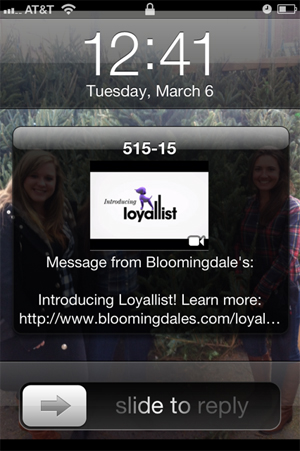The attitudes and behaviors of millennials that befuddle brands are only more apparent in Generation Z, a study by experiential retail marketing firm Interactions reveals.
Gen Z consumers’ budgets are weighted toward the experiential rather than the material, and they are constantly connected to technology. Similar tendencies in today’s consumers are challenging brands to reorganize marketing strategy and retail experience, and the data shows this is the new normal, not a passing fancy.
“The Next Generation of Retail” studied 2,000 United States consumers between the age of 14-19, noting shopper profile, in-store vs. online experiences, brand loyalty and tech/social media preferences. Gen Z currently encompasses a quarter of the U.S. population with a buying power of $44 billion; in the long-term, they represent the biggest opportunity for personal luxury goods sales.
Getting younger
Among those in the study, 89 percent are price conscious and 62 percent spend more on experiences than material items. Worse yet, approximately 81 percent are willing to switch from their favorite brand if they find a similar product of better price or quality, and as many don’t care if a product is from a national or private brand.

Bloomingdale’s loyalty SMS message
These consumers are, however, willing to sign up for loyalty cards in exchange for deals/discounts. The finding speaks to the value-focused mindset of Gen Z, but also presents brands with an opportunity to generate repeat business through effective rewards program management.
More unambiguous good news, 64 percent still prefer shopping in-store rather than online when given the choice. However, demands for the in-store shopping experience are rising, with “experiential retail” lauded as the future’s norm.
Barneys New York’s recent Chelsea flagship is an example of reconfiguring the in-store experience in accordance with new trends and behavior.
The use of iBeacons, a mobile application and opt-in purchase history has altered the purchasing experience. Aware of the tendency of consumers to use mobile phones while shopping, often comparing prices and merchandise with competitors, iBeacons will push product information and brand content to consumers when they are near the associated products.
Likewise, store associates can identify particular customers based on where they are in the store and access their purchase history, thereby allowing for a personalized shopping experience. The layout has also been altered in a nontraditional form in accordance with data showing the footpath of consumers, and a restaurant has been added.

Barneys New York Chelsea staircase
The restaurant and layout position the new Barneys as a place to linger. Barneys’ Chelsea location has a residential atmosphere rather than a pure retail experience, as the online environment now offers the flood of merchandise sometimes associated with physical stores (see story).
Such retail experiences could help counter the growing tendency consumers have to compare products in-store with those found elsewhere online. Nevertheless, a clean store, friendly and knowledgeable store associates and positive checkout experiences are still the top three components for Gen Z shoppers, with technology integration at number four.
More discreet preferences include the affinity for text messages, the most preferred method of communication with brands and retailers. Nevertheless, only 19 percent say they find out about new products via text notifications.
Social media is predictably popular with Gen Z, and Facebook is by far the preferred network for product research, shopping ideas and inspirations, product and store reviews and interacting with retailers and brands. More tellingly, 60 percent of respondents prefer to shop at a retailer that connects with them on social media rather than one that does not.
Consumers most prefer shopping destinations to share information about new products and/or about discounts, promotions and coupons, at 78 percent and 62 percent, respectively. More Gen Z consumers turn to social media to research products than to a retailer’s Web site, 58 percent to 56 percent.
Around half want to hear about new trends and upcoming in-store events, but curiously, only 19 percent want to hear where products are made or materials are sourced. Transparency and sustainability are major trends with Gen Y, and other studies show their importance for Gen Z, but social media is evidently not the preferred outlet.
Feeling secure
Brands already see payment security as a top priority (see story), and consumer behavior justifies that concern. While 78 percent of Gen Z trusts retailers to keep information safe, 59 percent avoid shopping where past security breaches have taken place.
The choice to evade a business that has been compromised in the past reflects recent suggestions that cyber attack costs are more than anticipated.
Costs most commonly associated with security compromises amount to less than 5 percent of the business impact, according to Deloitte Advisory.
While the fines, litigation fees and cost to improve cyber security are well-known expenses following a data breach, the loss of intellectual property, increase in insurance premiums and tarnished customer relations often equate to costs of a much higher magnitude. Taking a closer look at the associated costs of cyber attacks can help brands ensure they are properly budgeting security expenditures (see story).
Alongside the coming-of-age of younger generations in the West, booming economies of the East are touted as luxury’s other potential savior. Brands need to be sure to delineate Gen Z consumers of one group for those of another.
For example, almost 95 percent of Chinese Gen Z consumers say it is essential for brands to be sustainable and environmentally conscious, a reversal of the more materialistic tendencies of their parents, according to a report by RTG Consulting.
The continued growth of China over the next several years will ensure that its consumers remain prime targets for brands for the foreseeable future, as even a slowed China exceeds the growth rate of western nations. As a result, brands will need to make a connection to this group, the first born in a fully modern China, in the interest of long-term success (see story).
from
http://redirect.viglink.com?u=http%3A%2F%2Fredirect.viglink.com%2F%3Fu%3Dhttps%253A%252F%252Fwww.luxurydaily.com%252Fgen-z-lacks-brand-loyalty-seeks-social-media-engagement-open-to-loyalty-programs-report%252F%26key%3Dddaed8f51db7bb1330a6f6de768a69b8&key=ddaed8f51db7bb1330a6f6de768a69b8


No comments:
Post a Comment